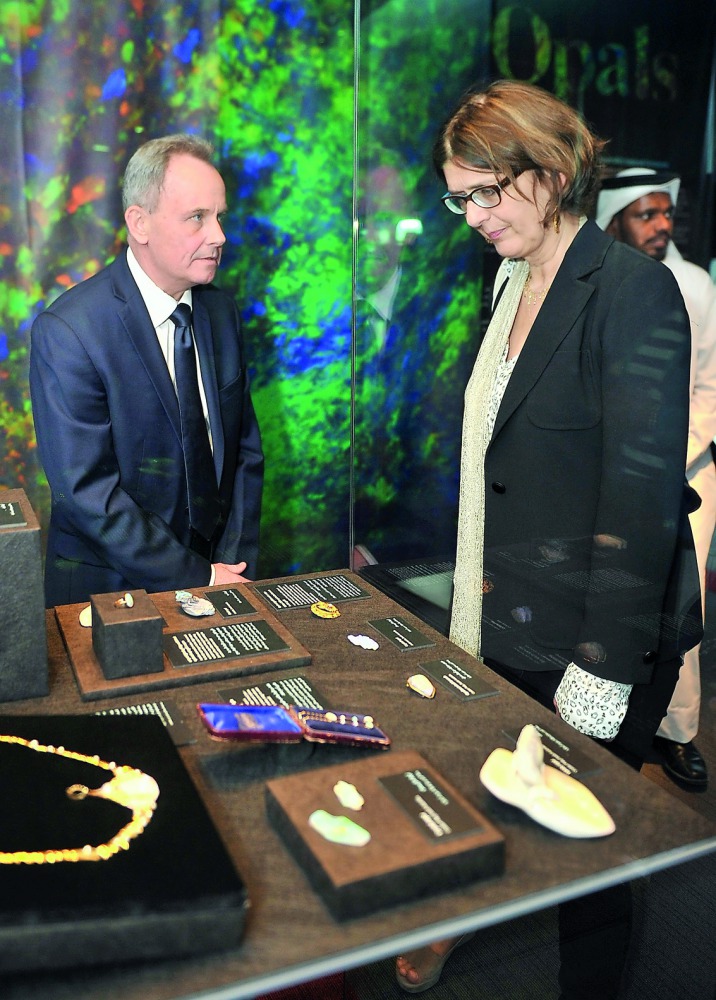
Brian Oldman (left), Diretor of South Australian Museum, at the Opals Exhibition at Australian Embassy. Pic: Baher Amin / The Peninsula
Some of the world’s finest and most spectacular opals formed 100 million years ago are featured at the first-ever exhibition hosted by the Australian embassy.
Nearly 70 pieces from the collection of the South Australian Museum have travelled outside Australia for the first time to offer gem enthusiasts and Doha residents a new side of the country.
“We are really proud to host the exhibition here because the embassy’s job is to acquaint the people in Qatar with what Australia can offer. Many Qataris know Australia as a tourist destination and a place for education as well as for its meat and vegetables in the market, but this exhibition shows another side of Australia that Qataris may not be aware of,” Australian Ambassador to Qatar Axel Wabenhorst told The Peninsula.
“Opal is our national gemstone-a symbol of Australia where most opals of the world come from. This exhibition provides a fantastic opportunity for us to show the natural beauty of Australia,” added Ambassador Wabenhorst.
“Ninety-five percent of the world’s precious opals come from Australia, however over 80 percent of the world’s precious opals come from the state of South Australia, so opal is a uniquely South Australian story and the South Australian Museum is proud that it has come to Qatar to tell that story as the inaugural exhibition at the first resident embassy in Doha,” said Brian Oldman, Director of South Australian Museum.
Many of the pieces on display are the remains of sea life that existed 100 million years ago which became opalised due to the unique chemistry of South Australia, explained Oldman. The centerpiece of the exhibition is the Virgin Rainbow opal which is regarded the finest opal in the world. It is the opalised remains of a belemnite, a squid-like sea creature that lived around 100 million years ago. The A$1m Virgin Rainbow looks like a fire burning as it is viewed from different angles with its yellow, green, blue and red colours. Also on show is the Fire of Australia, the finest rough cut opal in the world weighing 988 grammes. Oldman described the pieces as an “unmatched spectacle of ever-changing colours.”
The beauty of opals is derived from the colours produced through the refraction of light as it passes through them. As the angle of light changes so the colours within an opal change, so as the viewer moves in different angles, he sees a magnificent rainbow of colours materialising in front of his eyes.
Other notable pieces on show are the bones of an opalised plesiosaur, which was an aquatic hunting dinosaur, opalised shells and boulders among others. There are also special loans on display including an opal donated by Andrew Thomas, Australia’s first astronaut.
“Astronauts were allowed to take personal items up on space with them and Andrew Thomas took his mother’s opal ring up in space with him so this is the most travelled opal in the world,” said Oldman.
The exhibition is free of charge and is open until June 15 during the embassy’s opening hours from 9am to 3pm during on weekdays and on Saturday mornings, said the Ambassador.




